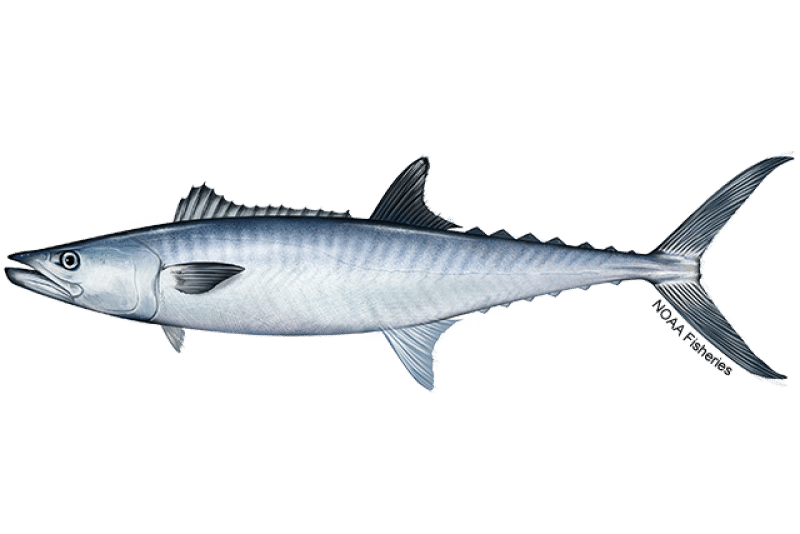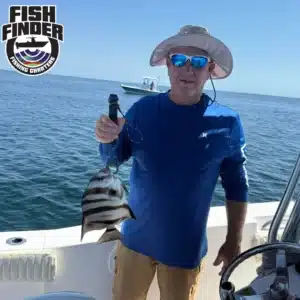King mackerel (Scomberomorus cavalla), often referred to simply as “kings,” are a highly sought-after species among saltwater anglers. These fish are a thrilling catch known for their powerful runs and impressive size. Whether you are a seasoned angler or a newcomer to the sport, learning to identify and target king mackerel can enhance your fishing experience. This blog will cover their habits, habitats, seasonal patterns, bait choices, and interesting scientific facts.
Identifying King Mackerel
King mackerel are characterized by their streamlined, torpedo-shaped bodies and forked tails designed for speed and agility. Here are some key features to help you identify them:
- Size: Kings are larger than their close relatives, the Spanish mackerel. They can grow to 90 pounds, though most catches range between 10 and 30 pounds.
- Color: They have a bluish-green back fading to a silvery belly. Unlike Spanish mackerel, kings lack the yellow spots on their sides.
- Dorsal Fin: The first dorsal fin of a king mackerel is distinctively lower and less pronounced than other mackerel species.
- Lateral Line: The lateral line dips sharply below the second dorsal fin.
Habits and Habitats
King mackerel are migratory predators, often found in the Atlantic Ocean and Gulf of Mexico. They prefer warmer waters, typically between 68°F to 85°F. Here’s what you need to know about their habits and habitats:
- Habitat: Kings are primarily found in coastal waters, nearshore reefs, and around structures like shipwrecks and oil rigs. They prefer depths ranging from 50 to 150 feet but can occasionally be found in deeper waters.
- Behavior: These fish are known for their aggressive feeding habits. They often hunt in schools and are swift, powerful swimmers. They feed on prey, including menhaden, herring, sardines, and squid.
Seasonal Patterns
The movement of king mackerel is influenced by water temperature and bait availability. Here’s a breakdown of their seasonal patterns:
- Spring: As water temperatures rise, king mackerel migrate northward along the coast. This is a prime time for anglers to target them as they move closer to shore.
- Summer: Kings are abundant and widely distributed during the summer months. They can be found nearshore and around structures.
- Fall: As temperatures begin to drop, they migrate southward. Fall is another excellent time for nearshore fishing as they pass through coastal waters.
- Winter: In winter, king mackerel are typically found in the warmer waters of the southernmost parts of their range.
Bait Choices
Selecting the right bait is crucial for successful king mackerel fishing. Here are some top bait choices:
- Live Bait: Menhaden, herring, sardines, and blue runners are among the best live baits for kings. They prefer live bait because of its natural movement and scent.
- Dead Bait: While live bait is preferred, dead bait like ribbonfish and ballyhoo can also be effective, especially when rigged to mimic natural swimming patterns.
- Lures: Kings are attracted to flashy, fast-moving lures. Trolling with spoons, diving plugs, and skirted baits can be highly effective.
Scientific Facts
To round off our guide, here are some fascinating scientific facts about king mackerel:
- Lifespan: King mackerel can live up to 14 years, though their average lifespan is around seven years.
- Growth Rate: These fish grow quickly, reaching up to 10 pounds in just a few years.
- Reproduction: Spawning occurs from May to October, with peak activity in the summer months. Females can release up to 2.2 million eggs per season.
- Diet: Their diet consists primarily of smaller fish and squid, but they are opportunistic feeders and will consume various prey.




